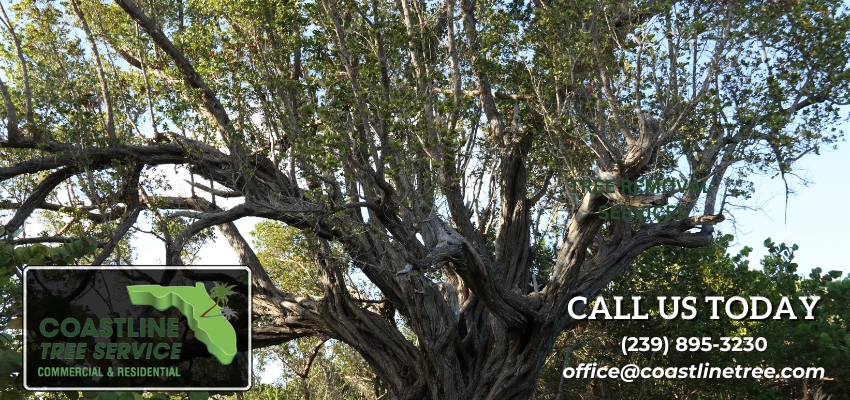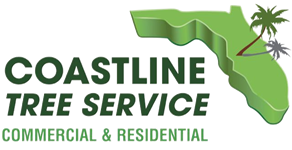
The Essential Guide to Maintaining Your Buttonwood (Conocarpus Erectus) Tree in SW Florida
Today, we’re excited to introduce you to the Buttonwood tree (Conocarpus erectus), a resilient and beautiful addition to any landscape that adds charm and character to many neighborhoods in our region. Whether you’re strolling through a local park, enjoying a day at the beach, or simply admiring your HOA community’s landscaping, you’re likely to encounter these remarkable trees. In this blog, we’ll delve into what makes the Buttonwood tree so unique, highlight where you can find them throughout Southwest Florida, and provide an in-depth guide on the top ten maintenance practices essential for their health and longevity. Join us as we explore how to nurture and preserve these wonderful trees, ensuring they continue to thrive and enhance our environment for years to come.
What is the Buttonwood (Conocarpus erectus) Tree?
The Buttonwood tree, scientifically known as Conocarpus erectus, is a versatile and hardy species native to coastal regions. Often found in mangrove forests, this tree thrives in both brackish and freshwater environments. It’s characterized by its silvery-green foliage, smooth bark, and small button-like fruits, from which it derives its name. Due to its salt tolerance and ability to withstand strong winds, the Buttonwood tree is a popular choice for coastal landscapes in Southwest Florida.
Where Can You Find Buttonwood Trees in Southwest Florida?
Buttonwood trees are commonly found along coastal areas, estuaries, and in mangrove ecosystems throughout Southwest Florida. They are frequently planted in residential landscapes, parks, and community spaces due to their aesthetic appeal and ability to provide shade and wind protection. Whether you live in a beachfront property or an inland community, chances are you’ve encountered these resilient trees.
Top 10 Maintenance Practices for Buttonwood Trees
Maintaining a Buttonwood tree requires regular attention and care. Here are the top ten maintenance practices to keep your Buttonwood tree healthy and thriving:
1. Proper Planting
- Ensure the tree is planted in well-draining soil.
- Choose a location with ample sunlight and enough space for root expansion.
- Avoid planting too deeply; the root flare should be visible above the ground.
2. Watering
- Water newly planted Buttonwood trees regularly until they establish.
- Mature trees are drought-tolerant but benefit from supplemental watering during prolonged dry spells.
- Avoid overwatering as it can lead to root rot.
3. Mulching
- Apply a 2-3 inch layer of organic mulch around the base of the tree.
- Keep mulch away from the trunk to prevent disease and pest infestation.
- Mulch helps retain soil moisture and regulate temperature.
4. Pruning
- Prune to remove dead or damaged branches.
- Conduct structural pruning to shape the tree and improve air circulation.
- Schedule annual pruning sessions during the dormant season.
5. Fertilization
- Use a balanced, slow-release fertilizer to provide essential nutrients.
- Fertilize twice a year: once in spring and once in fall.
- Avoid excessive fertilization to prevent rapid, weak growth.
6. Pest and Disease Management
- Regularly inspect the tree for signs of pests such as scales and aphids.
- Use appropriate insecticides or horticultural oils if needed.
- Monitor for fungal diseases like leaf spot and treat promptly.
7. Soil Testing and Amendment
- Conduct soil tests to determine nutrient levels and pH balance.
- Amend soil based on test results to ensure optimal growing conditions.
- Maintain a slightly acidic to neutral pH level for best growth.
8. Wind and Storm Protection
- Secure young trees with stakes to prevent wind damage.
- Trim branches to reduce wind resistance before hurricane season.
- Provide additional support to trees in exposed locations.
9. Weed Control
- Keep the area around the base of the tree free from weeds.
- Use mulch and manual weeding to minimize competition for resources.
- Avoid using herbicides that can harm the tree.
10. Regular Health Assessments
- Schedule regular inspections with certified arborists.
- Look for signs of stress, such as leaf discoloration or wilting.
- Address issues promptly to prevent long-term damage.
Coastline Tree Service: Your Partner in Tree Care
At Coastline Tree Service, we understand the importance of maintaining the health and beauty of your Buttonwood trees. Our team of certified arborists is equipped with the knowledge and expertise to handle all aspects of tree care. From planting and pruning to pest management and storm preparation, we offer comprehensive services tailored to the needs of your HOA community in Southwest Florida.
Our commitment to excellence ensures that your trees receive the highest level of care, promoting their longevity and enhancing the natural beauty of your landscape. With Coastline Tree Service, you can rest assured that your trees are in good hands.
We proudly serve and offer tree removal services in Naples, Marco Island, Bonita Springs, Estero, Fort Myers, Fort Myers Beach, North Fort Myers, Cape Coral, Sanibel & Punta Gorda.
Give us a Call at: (239) 895-3230 or contact us online at:https://www.coastlinetree.com/contact-us/.
